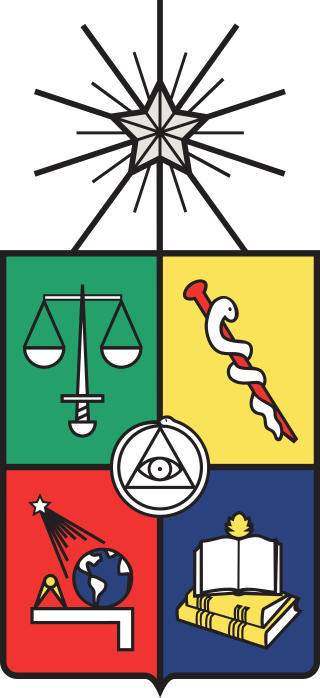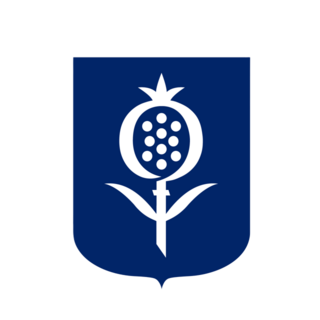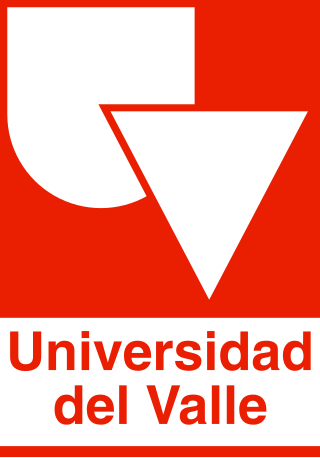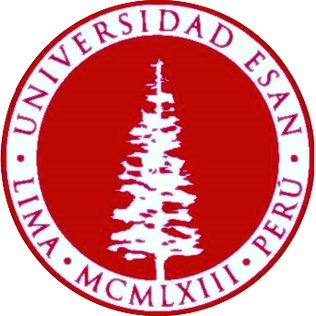
Diego Portales University is one of the first private universities founded in Chile and is named after the Chilean statesman Diego Portales.

Tula de Allende is a town and one of the 84 municipalities of Hidalgo in central-eastern Mexico. The municipality covers an area of 305.8 km2 (118.07 sq mi), and as of 2010, the municipality had a total population of 103,919. The municipality includes numerous smaller outlying towns, the largest of which are El Llano, San Marcos, and San Miguel Vindho. It is a regional economic center and one of Mexico's fastest growing cities. However, it is best known as the home of the Tula archeological site, noted for its Atlantean figures. Its built-up area made up of Atotonilco de Tula, Atitalaquia, Tlaxcoapan municipalities was home to 188,659 inhabitants at the 2010 census.

The University of Chile is a public research university in Santiago, Chile. It was founded on November 19, 1842, and inaugurated on September 17, 1843. It is the oldest in the country. It was established as the continuation of the former colonial Royal University of San Felipe (1738), and has a rich history in academic, scientific and social outreach. The university seeks to solve national and regional issues and to contribute to the development of Chile. It is recognized as one of the best universities in Latin America for its leadership and innovation in science, technology, social sciences, and arts through the functions of creation, extension, teaching, and research. It is considered the most important and prestigious university in the country.

The Pontifical Catholic University of Chile is a traditional private university based in Santiago, Chile. It is one of the thirteen Catholic universities existing in Chilean university system and one of the two pontifical universities in the country, along with the Pontifical Catholic University of Valparaíso. Founded in 1888, it is one of Chile's oldest universities and one of the most recognized educational institutions in Latin America.
An institute of technology is an institution of tertiary education that specializes in engineering, technology, applied science, and natural sciences.

University of Biobío is a university in Chile. It is part of the Chilean Traditional Universities.

The National Technological University is a country-wide national university in Argentina, and considered to be among the top engineering schools in the country. Hosting over 85,000 students, its student body is comparable to Argentina's third-largest university and exceeded significantly only by the University of Buenos Aires (UBA). It has 29 semi-independent branches of various sizes located all over the country.

The Universidad de La Sabana is a private university in Colombia, supervised by the Colombian Ministry of Education. It was founded on September 21, 1979 by the Asociación para la Enseñanza Aspaen, its predecessor was the INSE "Instituto Superior de Educación", considered one of the first in distance education in the country and Latin America.

The Universidad Tecnológica de México (UNITEC) is a private university located in Mexico City, with campuses in the states of Guanajuato, Jalisco, México and Querétaro. It offers high school, bachelor, and postgraduate programs. Ignacio Guerra Pellegaud founded it in 1966 and since 2008 is part of the Laureate International Universities Network. The UNITEC has 10 campuses: Cuitláhuac, Marina and Sur in Mexico City; Atizapán, Ecatepec, Los Reyes, and Toluca in the State of Mexico; Leon in the State of Guanajuato; Guadalajara in the State of Jalisco; and Querétaro in the State of Querétaro. Additionally, it has an Online Campus. UNITEC total enrollment is higher than 90,000; more than 64,000 students are concentrated in the campuses of the Mexico City Metropolitan Area, which makes it the largest private university in this country region.
Universidad Panamericana, commonly known as UP, is a private research, Roman Catholic university founded in Mexico City. It has four campuses: the main Mixcoac campus in the Benito Juarez borough of south-western Mexico City, founded in 1968; the Guadalajara campus established in 1981; the Aguascalientes campus established in 1989; and Campus Santa Fe, also in Mexico City, founded in 2011. One of the most prestigious universities in Mexico, it on is currently ranked 4th best university in Mexico by QS World University Rankings and has a 4 star rating.

University Charles III of Madrid (UC3M) is a public university in the Community of Madrid, Spain. Established in 1989, UC3M is an institution with a distinctly international profile. It offers a broad range of master's and bachelor's degree programs in English, and nearly 20% of the student body is made up of international students. It is the first university in Spain and the third in Europe in the number of its students participating in the Erasmus student exchange programs.

EAFIT University is a private Colombian university located in Medellín offering 23 undergraduate programs, 70 specializations, 34 masters, and six doctoral programs. The university offers degrees in various disciplines through its schools of Management, Engineering, Law, Finance and Economics, Science, and Humanities. Universidad EAFIT was approved by the Colombian Ministry of Education on May 6, 1971. It has three additional branches in Bogotá, Pereira, and Rionegro.

The Andrés Bello National University (UNAB) is a Chilean private university founded in 1988.

The University of Valle, also called Univalle, is a public, departmental, coeducational, research university based primarily in the city of Cali, Valle del Cauca, Colombia. It is the largest higher education institution by student population in the southwest of the country, and the third in Colombia, with more than 30,000 students. The university was established by ordinance No. 12 of 1945, by the Departmental Assembly as the Industrial University of Valle del Cauca, under the leadership of Tulio Ramírez Rojas and Severo Reyes Gamboa.

Michoacan University of Saint Nicholas of Hidalgo (UMSNH) is a public university in Morelia, Michoacán, Mexico, and the oldest institution of higher education in the Americas. The University grants law, economics, computer science, medicine, architecture, and dentistry degrees, plus several other additional fields of study, mainly in Humanities, Science and Arts.
UAM Cuajimalpa is the fourth of the five campuses of the Universidad Autónoma Metropolitana (UAM). It is located in the western part of Mexico City. It was created in 2005 to respond to the high demand of a high quality public higher education in that part of the Mexico city. Currently is located in Avenida Prolongación Vasco de Quiroga 4871, colonia Santa Fe Cuajimalpa, Delegación Cuajimalpa de Morelos, México, Distrito Federal, C.P. 05300. It had three temporary locations until December 2013, one in Delegación Álvaro Obregón, and the others in Delegación Miguel Hidalgo. The university occupied his definitive campus on January 6, 2014 in the area of Santa Fe, where all the activities of UAM Cuajimalpa take place. The academic activities are organized in three main areas, called divisions:

The Escola Politécnica of the University of São Paulo is an engineering school at the University of São Paulo (USP) in São Paulo, Brazil.

The Autonomous University of the State of Hidalgo is a public university located in Pachuca, the capital of the State of Hidalgo in east-central Mexico, with campuses statewide. The university was initially founded in 1869. It is the oldest, largest, and most respected research university in the state and a member of the Consortium of Mexican Universities (CUMEX).

ESAN University or Universidad ESAN in Spanish is a non-profit private University, located in Lima, Peru.

The Universidad Politécnica Metropolitana de Hidalgo is a public state university in the state of Hidalgo. It was created by an executive order signed on January 9, 2008, and published in the official state newspaper on January 13 of that year.

















